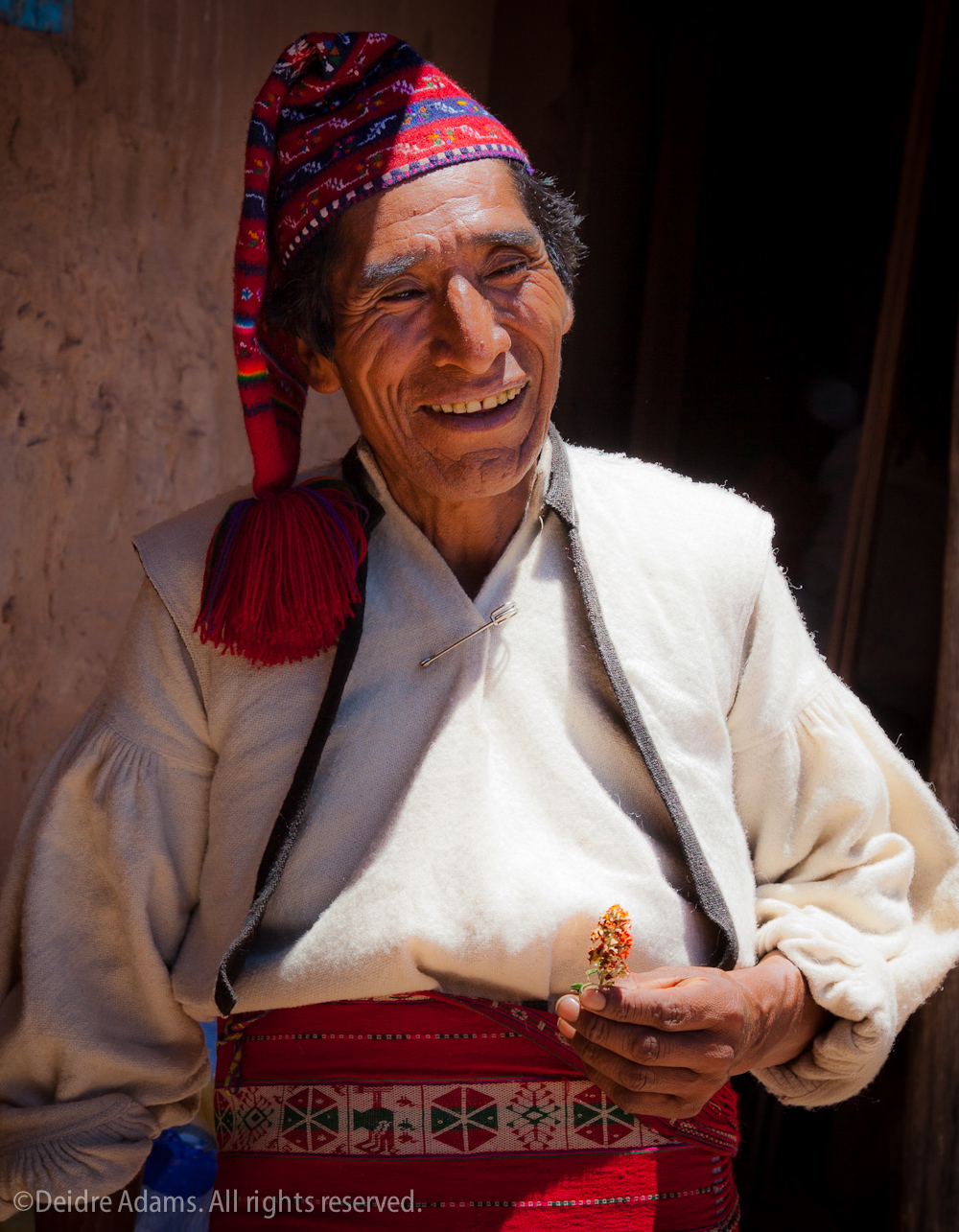 Alejandro Flores shows local plant he uses for natural dyeing
Alejandro Flores shows local plant he uses for natural dyeing
In 2005, Taquile was added to the UNESCO Proclamation of Masterpieces of the Oral and Intangible Heritage of Humanity, a list that recognizes the function and values of living cultural expressions and practices, and seeks to raise awareness of the need to safeguard them. The criteria for inclusion on the list includes “proof of excellence in the application of the skill and technical qualities displayed” as well as demonstrated “outstanding value as masterpiece of the human creative genius.” Taquile was selected for its “cultural space … and its textile art, which is produced as an everyday activity by both men and women, regardless of their age, and worn by all community members” (Taquile and its Textile Art).
Alejandro Flores Huatta is one of the more well-known textile artists on Taquile. He was selected by the Smithsonian’s National Museum of the American Indian to assist with curating the “All Roads Are Good: Native Voices on Life and Culture” exhibition in 1994. We didn’t know any of this before our visit, but during our boat trip over, Susan talked with another passenger who happened to have one of his weavings with him, which Susan admired, and thus began the quest to find him.
Although it seems that Alejandro gets the credit, the weaving business is a family endeavor. During our visit, Alejandro set up the loom, but then it was his wife who proceeded to sit down to do the actual weaving for the demonstration. Another family member finishes the fringe on the ends of the woven pieces and handles the money when a visitor makes a purchase.
The traditional process of weaving is low-tech and labor-intensive, involving solid color stripes with an intricately patterned center strip that makes the addition of each row of weft very time-consuming. It can take many days to complete one piece.
As is typical on this island where it’s the men who are known for knitting, Alejandro himself is a knitter. The Taquilean technique is different from the usual I’ve seen. The men feed the yarn from around their necks and instead of their fingers, they use their thumbs to wrap the yarn around the needle to create the stitch. They are amazingly fast in the execution of their complicated patterns. After putting on his glasses, Alejandro proceeded to demonstrate the technique for us.
Textile Arts of Taquile Island, Peru explains the traditions of the caps worn by the men:
During the latter part of the twentieth century and the early twenty-first century, unmarried men wore a finely-knit cap (ch’ullu soltero) with a colored base and white top, without earflaps. Married men, especially those who had completed community service, wore a red and navy blue striped knit cap (pintay ch’ullu), filled with design motifs along its length. Some men wore a ch’ullu oreja (also called ninri ch’ullu), an Aymara- or Lake Titicaca–style knit cap that has earflaps, which usually includes numerous multicolored rainbow-like rows.
The Flores family is unique on Taquile because their weavings are done with fibers colored only with natural dyes. Alejandro showed us the materials used to make the dyes, along with samples of the dyed wool. This one is cochinilla (cochineal), which comes from an insect that lives and feeds on the prickly pear cactus.
 Alejandro demonstrates the color by crushing one of the dried insects
Alejandro demonstrates the color by crushing one of the dried insects
Starbucks Coffee recently stepped into a big controversy by using cochineal to color their strawberry Frappuchinos, but what people didn’t know is that it’s been used for centuries to add red coloring to textiles, cosmetics, and yes, even food. This great article from Business Insider has more on the process.
Unfortunately, our memories didn’t serve as I’d hoped, and I haven’t been able to discover the name of the small orange-flowered plant at the top of this post or the green-leaved one (below, in the image gallery). If anyone reading this happens to know, I’d love it if you’d leave a comment.
The naturally-dyed woven pieces made by the Flores family have a distinctive color palette. This is the one I decided I had to have:
(click for full image)
The family doesn’t sell their work in the local cooperative store in the plaza, and neither do they export it as far as we could tell. They don’t label the pieces, either, so it would seem they don’t make a huge effort to promote it anywhere. We thought that they must do a very nice business simply through word of mouth, but in researching for this post, I discovered that Alejandro Flores is just as well known for his hospedaje (lodging house) as for his textiles.

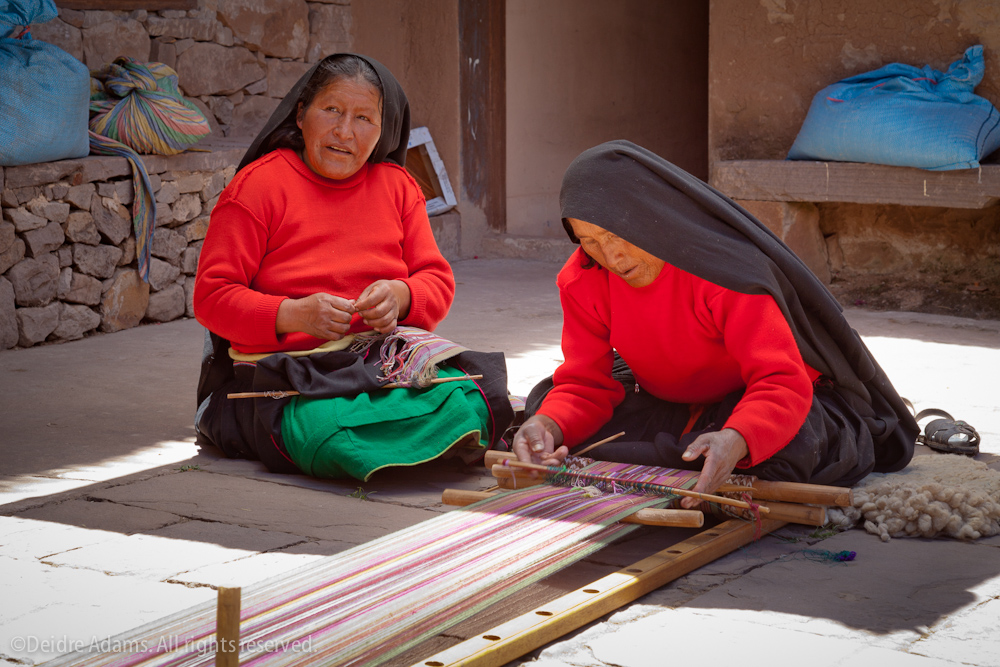
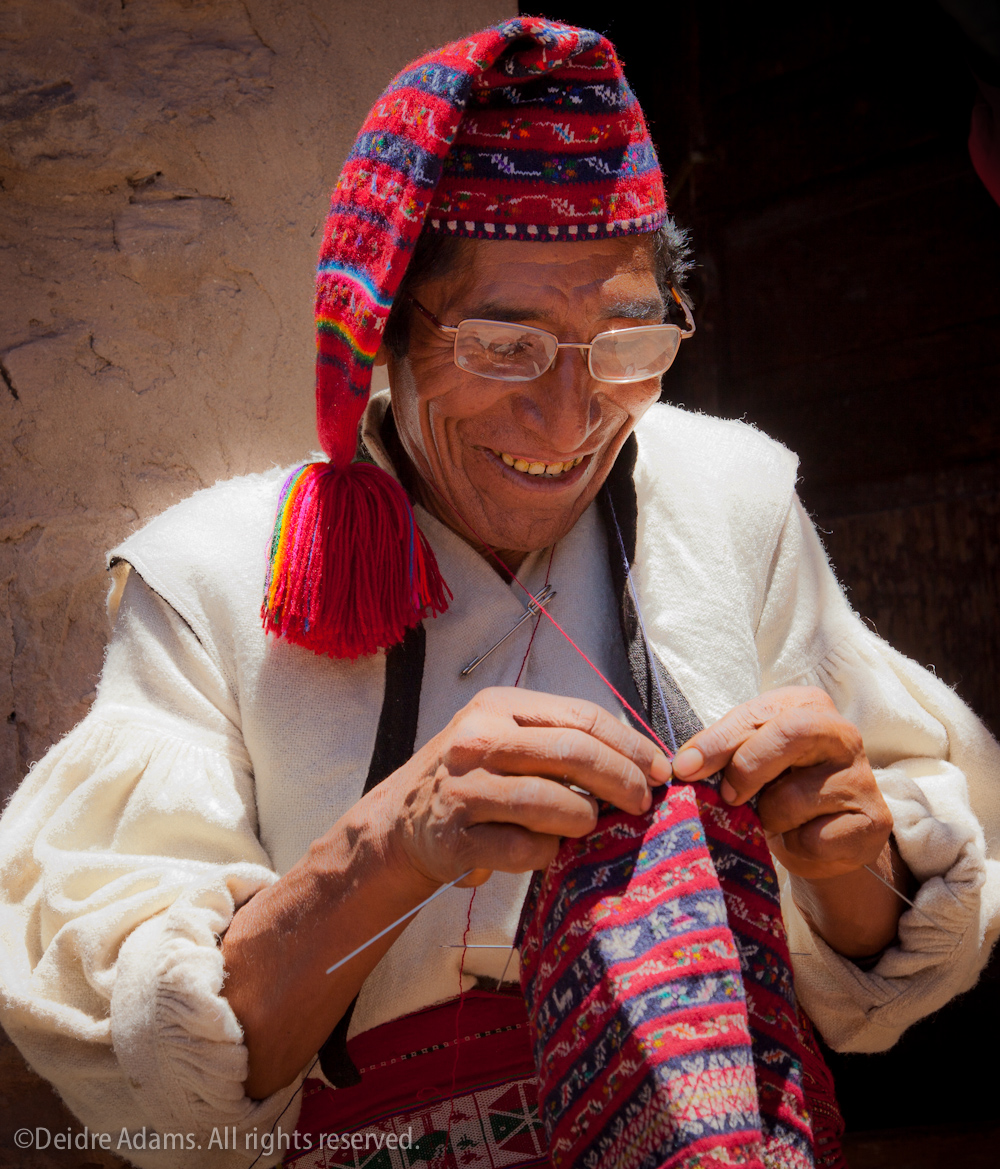
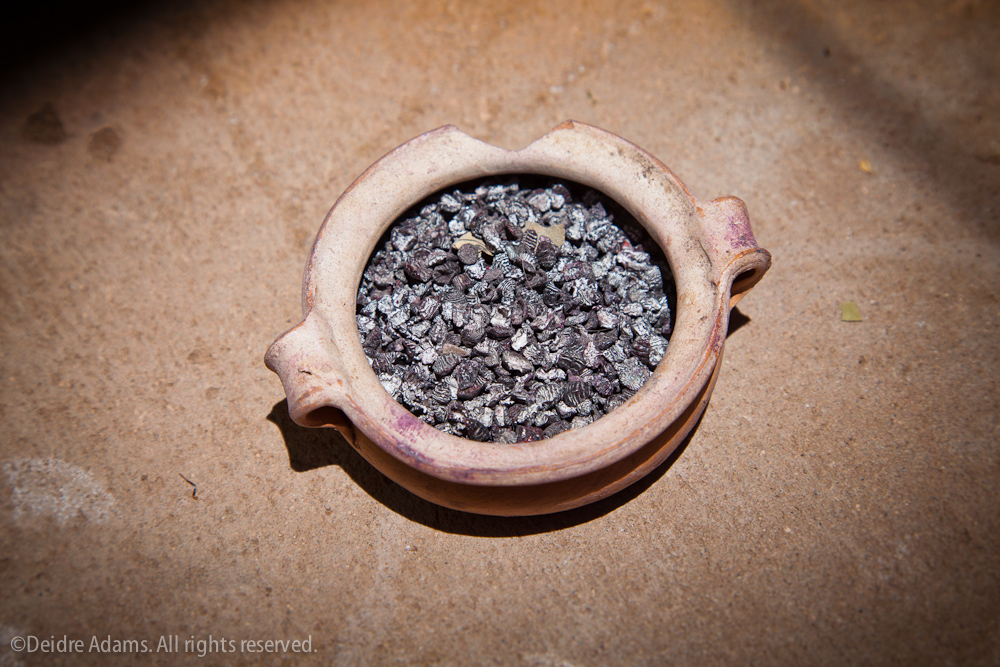
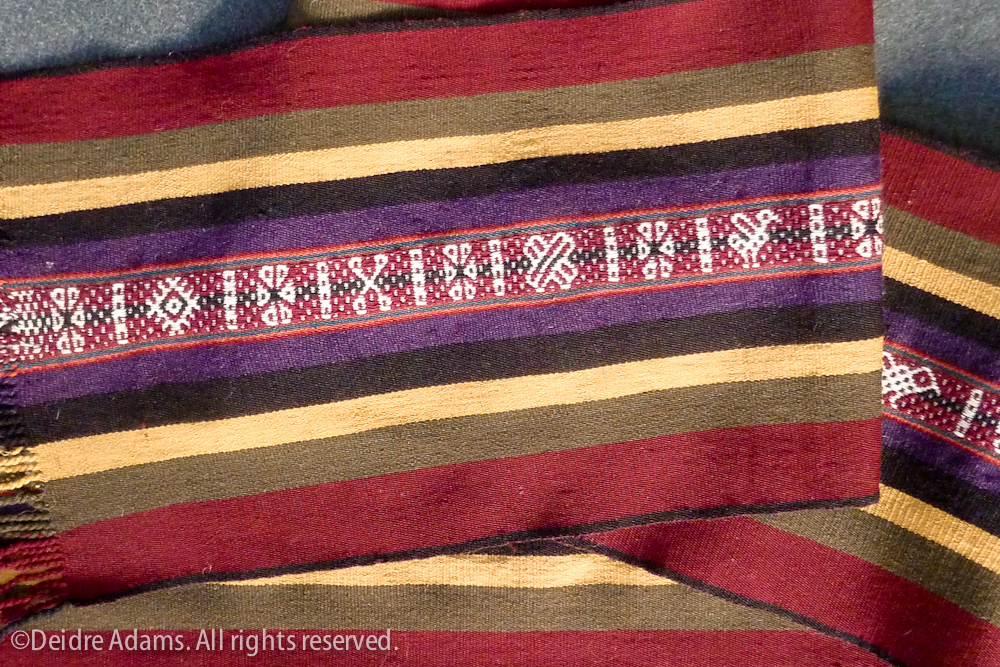
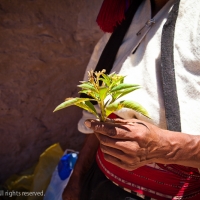

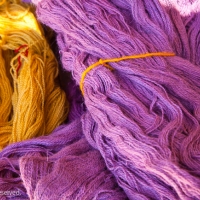

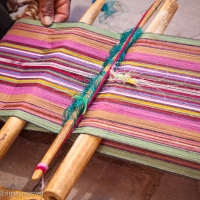
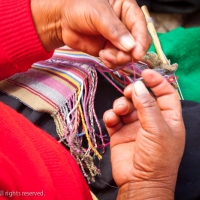
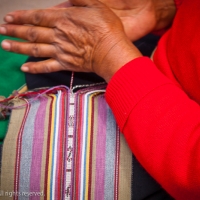
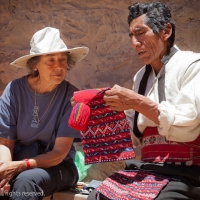
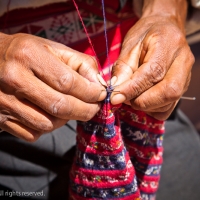
Deidre, thank you for sharing this wonderful story. I am always inspired by, not only your work, but also your observations and how you write about them.
Thank you, Leslie. Very kind of you!